Bodyweight exercises are the foundation of functional fitness and training. These functional bodyweight exercises, often referred to as calisthenics, include mainly squatting, lunging, hinging, pushing, pulling, and turning in daily life. By incorporating these movements, one can create the best bodyweight exercise program that enhances overall strength and functionality.
Table of Contents
ToggleWe can add resistance or make the movements more complex as our bodies get better at the functional bodyweight workout that builds and supports those movements. Engaging in the best functional exercises from the start is crucial. Without the fundamentals, pushing your body to do advanced exercises or working with large loads could lead to damage. A well-rounded bodyweight functional training program ensures safety and effectiveness.
Keep reading below to learn about the best bodyweight exercises for strength and how to integrate them into your routine for maximum benefits.
Start Building Your Dream Body Today
Ready to elevate your fitness game without falling into the trap of dull, repetitive routines that just don’t deliver? Imagine sculpting your ideal physique and boosting your health, all while still enjoying life’s pleasures, like those irresistible weekend getaways and your aunt’s legendary cheesecake. With our online fitness and nutrition coaching service, you don’t have to compromise. Dive into a personalized fitness journey that blends perfectly with your lifestyle, not against it. Book your completely free discovery consultation today, and take the first step towards a transformation that doesn’t require giving up the joys of life.

“I was skeptical about online fitness coaching, but Functional Body Savage completely changed my perspective. Vanja and Radomir’s personalized approach and attention to detail have helped me achieve goals I never thought possible. I’m stronger, more confident, and grateful for their guidance.”
Emily Thompson, San Francisco, CA
Learn More About Our Online Coaching ServiceQuick Summary
- Calisthenics is a form of functional strength training that uses only your body weight.
- The benefits of a functional bodyweight workout are that they are quick and easy to carry out.
- You can improve your power, endurance, speed, flexibility, coordination, and balance by performing a functional bodyweight workout.
14 Functional Bodyweight Exercises for Functional Strength
There are many bodyweight functional exercises for functional strength. For those seeking the best functional exercises for beginners, the following list will provide a comprehensive guide. The top 14 functional body weight exercises for building incredible functional strength are listed below.
1. Bodyweight Squat
Undoubtedly one of the most crucial exercises to master is the bodyweight squat. Squat belongs to the squat movement pattern while targeting the quads, hamstrings, and glutes.
The squat also works the core and enhances hip mobility.
Below are instructions on doing squats correctly to maximize performance and avoid injuries during your bodyweight functional training.
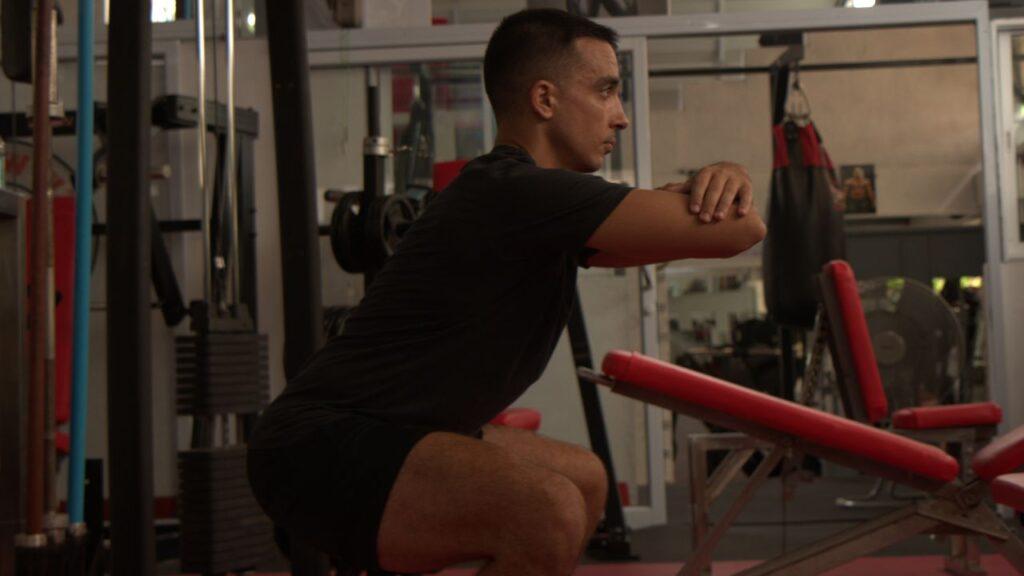
How to Perform a Bodyweight Squat
- Stand tall with your feet slightly wider than your shoulders and your toes pointing slightly outward. Hands should remain by sides.
- . Push your hips back and drop yourself toward the ground while contracting your glutes.
- After pausing, drive your weight through your heels and stand tall once your quads are roughly parallel to the floor.
Pro Tip: To maximize the effectiveness of bodyweight squats, focus on maintaining a steady, controlled pace and ensure your knees don’t extend beyond your toes during the movement.
2. Pull-up
Pull-up is an excellent exercise that belongs to vertical pull movement patterns. It mainly targets your lats and biceps while also involving your deltoids, rhomboids, and core. You can perform neutral grip pull-ups, pronated grip variations, or supinated grip variations for the best possible results.
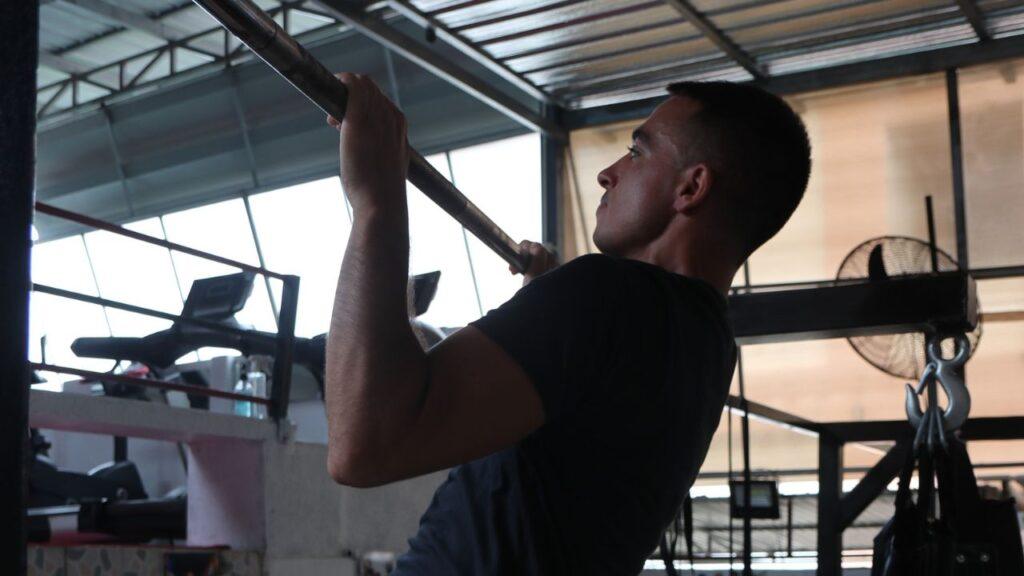
How to Perform a Pull-up
- Begin by placing yourself exactly beneath a pull-up bar. Make an overhand grip with your hands.
- Lift your feet, so you are hanging from the bar, then tighten your abs by drawing your belly button closer to your spine. Draw your shoulders down and back.
- Bend your elbows and raise your upper body toward the bar until your chin is over the bar by contracting the muscles in your back and arms. You want to ensure your shoulder blades are down and back throughout the exercise.
- Lift your body to the starting posture while extending your elbows.
Pro Tip: Engage your core throughout the exercise and visualize pulling your elbows down towards your hips to activate your lats and biceps fully.
3. Straight-Leg Sit-up
The straight-leg sit-up is an excellent exercise to incorporate into your functional bodyweight training. It is a considerably safer alternative than the crunch, which promotes excessive spine flexion. The abs and hip flexors can both benefit from straight-leg sit-ups. The straight-leg sit-up is a movement that uses the hip hinge.
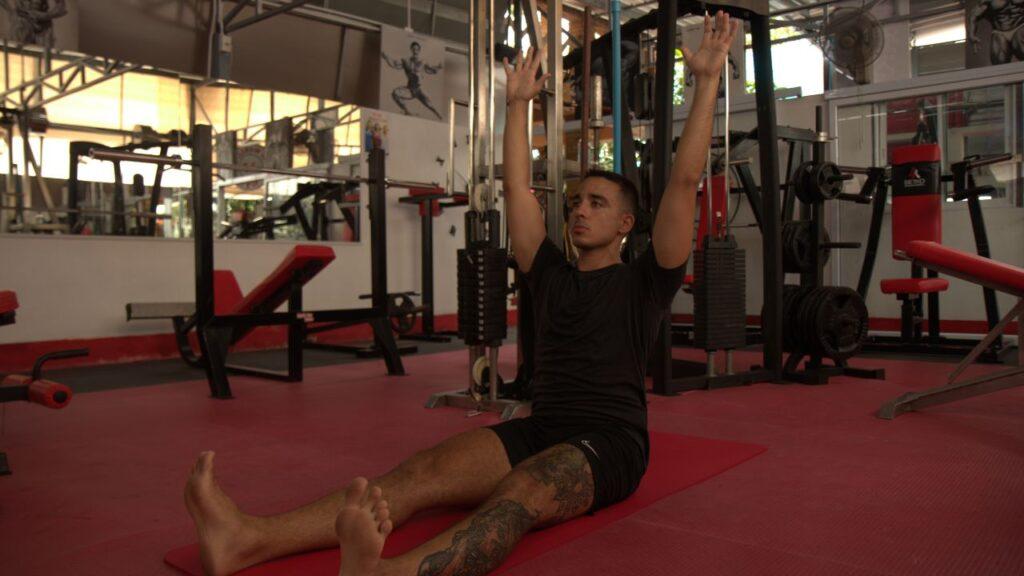
How to Perform a Straight-Leg Sit-Up
- With your arms by your sides, lie flat on your back.
- Pull yourself to a fully seated position by engaging your core, closing the gap in your low back, and lifting your legs.
- Return to the starting posture while maintaining a tight core.
Pro Tip: Keep your movements fluid and controlled, and avoid jerking or using momentum to sit up to target your abs and hip flexors effectively.
This exercise is a key component of a functional bodyweight workout program aimed at enhancing core strength and stability.
4. Single-Leg Deadlift (RDL)
Single-leg deadlift is a fantastic bodyweight functional training exercise that belongs to deadlift movement patterns. It strengthens muscles such as the glutes, hamstrings, lower back, and core muscles.
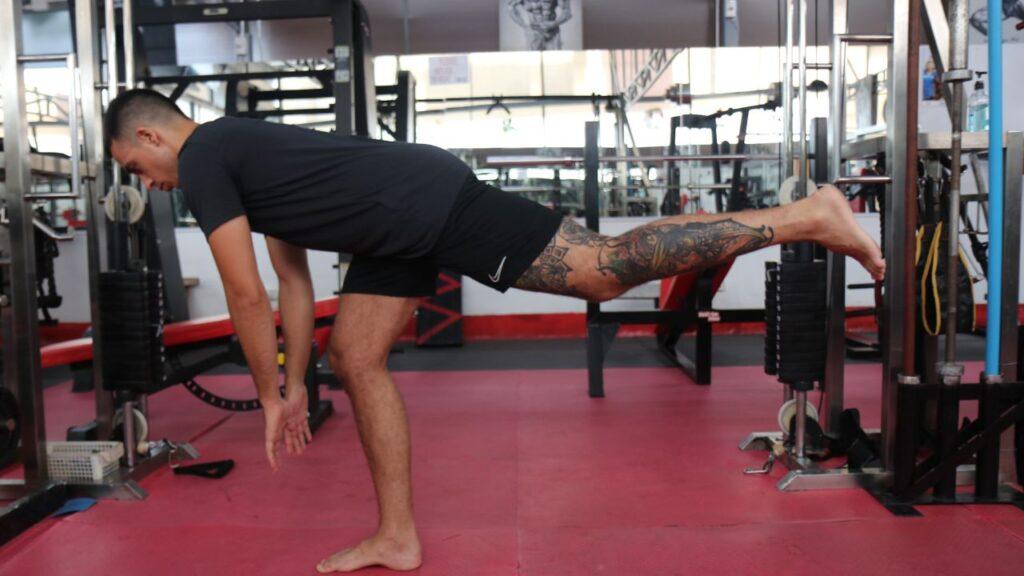
How to Perform a Single-Leg Deadlift
- Be sure to brace your core as you stand tall.
- Slowly let the other leg fall back while pressing one foot firmly into the ground. As you hinge at the hips and drive your upper body forward, keep the knee of the supporting leg slightly bent.
- Continue to lower yourself while keeping your back straight. Stop when your hamstrings are fully contracted, and your hands are about one foot off the ground.
- Go back to the starting place.
Pro Tip: Maintain a slight bend in your standing knee and keep your back straight to target your glutes and hamstrings without straining your lower back.
5. Reverse Lunge
The reverse lunge is a go-to functional bodyweight training exercise to strengthen the lower body while training it unilaterally or one at a time. Strengthening the quads, hamstrings, and glutes and opening the hips are all benefits of the reverse lunge.
Including the reverse lunge in a bodyweight functional training program can greatly enhance lower body strength and mobility.
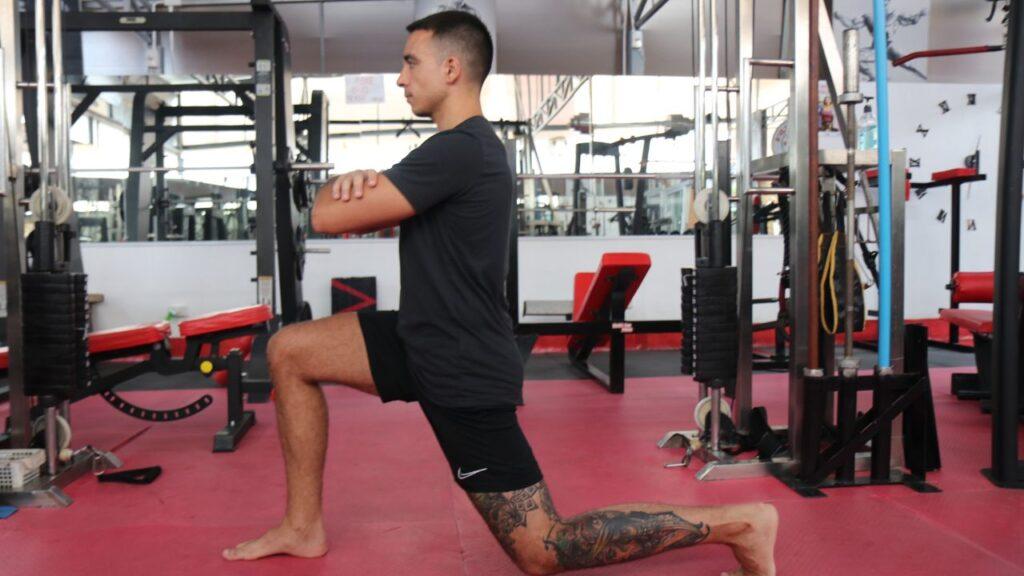
How to Perform a Reverse Lunge
- Point your hips toward the floor, stand tall, engage your core to keep your back neutral, and support yourself.
- Retract one foot with control. Then, concentrate on sinking into the lunge slowly.
- Drive through your front heel to stand up straight and squeeze your glutes to extend your hips to their maximum capacity.
Pro Tip: Ensure your front knee is aligned with your ankle and your back knee is lowered towards the ground, focusing on a controlled descent for maximum lower body engagement.
6. Trx Row
Strengthening the upper back can be achieved by performing the TRX row workout.
The lats, rhomboids, and traps are the main back muscle groups addressed by the TRX row, in addition to the shoulders and core.
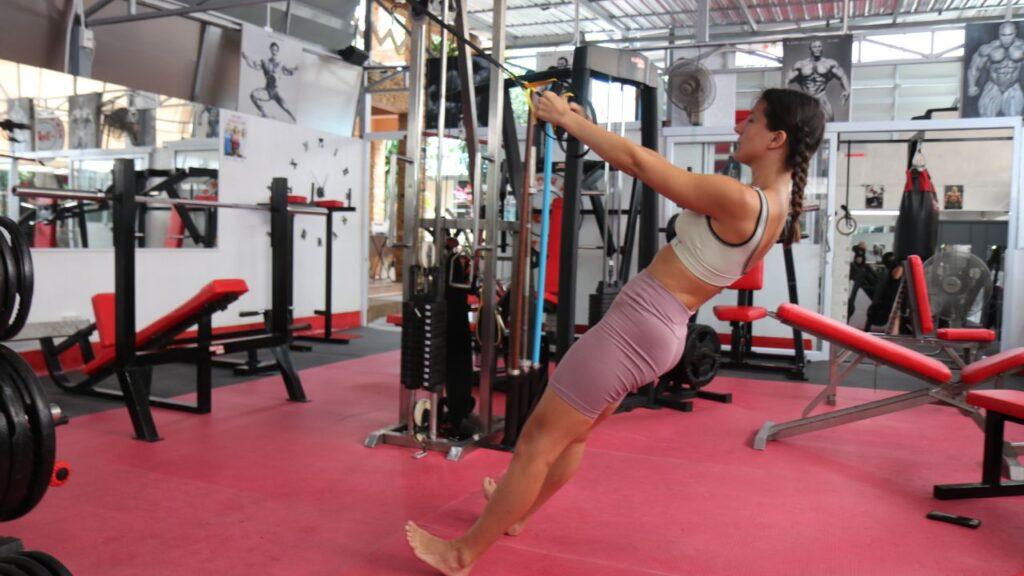
How to Perform a TRX Rows
- Hold a TRX handle or ring in each hand, palms facing one another, while standing with your feet hip-distance apart.
- Once your body is straight, your arms should be fully extended, and your torso should be at a 45-degree angle to the floor.
- Bend your elbows and move your chest nearer your hands while maintaining a strong core and straight legs with your feet or heels on the ground.
- Lower your torso while maintaining your arms straight to accomplish one rep.
Pro Tip: Keep your body in a straight line from head to heels, and pull your shoulder blades together at the top of the movement for a full upper back workout.
7. Elbow or Palm Plank
The elbow or palm plank is an essential bodyweight functional training exercise for pillar strength or the stability of your shoulders, core, and hips. Long-term elbow or palm plank holding develops the core, which guards the spine against excessive flexion or extension.
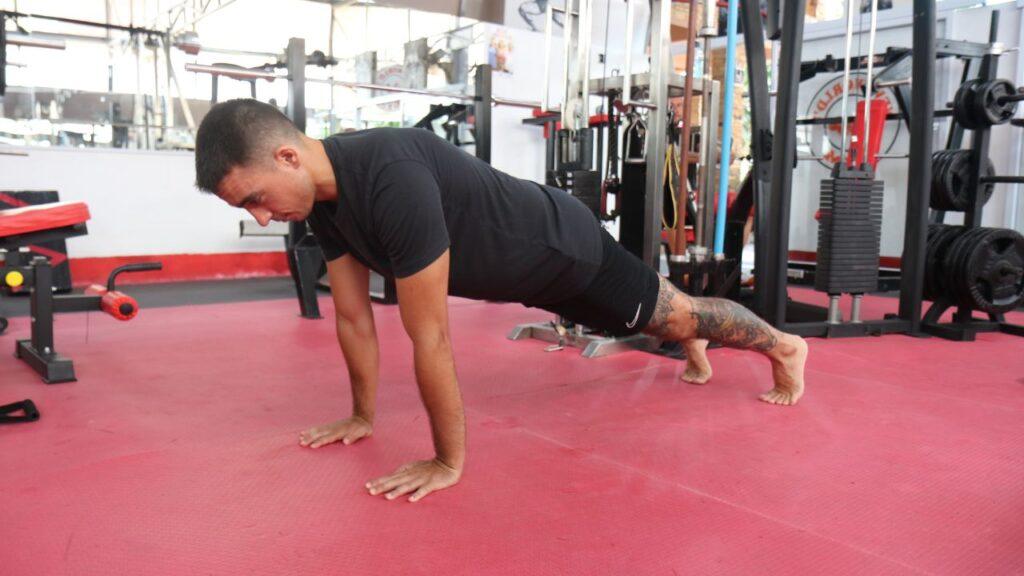
How to Perform an Elbow or Palm Plank
- While bracing your core, get down on your hands (or elbows) and toes.
- Think about pushing your shoulder blades back up while squeezing your glutes and drawing your belly button into your spine. You need to keep your head in a neutral position.
Pro Tip: Keep your body as straight as possible and your hips in line with your shoulders and heels to effectively strengthen your core and shoulders.
8. Superman
Superman is a back-strengthening exercise that uses only your body weight. As a result, you are developing the muscles that make up your posterior chain, which runs around the back of your body. Squat, hinge, push, pull, and carry are all common movement patterns that require these muscles.
Incorporating Superman into your functional calisthenics workout will enhance the strength and stability of your posterior chain. This workout tones not only all of the back muscles but also the core, shoulders, and glutes.
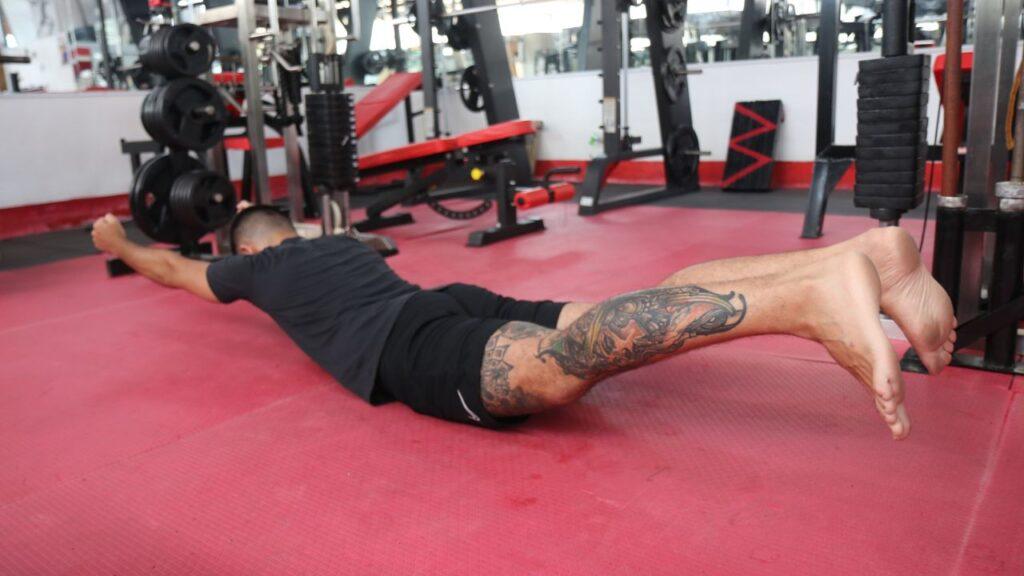
How to Perform a Superman
- Spread your arms out in front of you while lying flat on your stomach.
- Brace your core and raise your arms and legs off the floor. Maintain a neutral head position. Return to the starting position after pausing.
Pro Tip: Lift your arms and legs simultaneously while keeping your head neutral, and focus on squeezing your glutes and back muscles.
9. RFE Split Squat (Bulgarian Split Squat)
The Bulgarian split squat, sometimes referred to as the RFE split squat or rear foot elevated split squat, is a progression from the reverse lunge. It belongs to the squat movement pattern while strengthening the quads, hamstrings, and glutes.
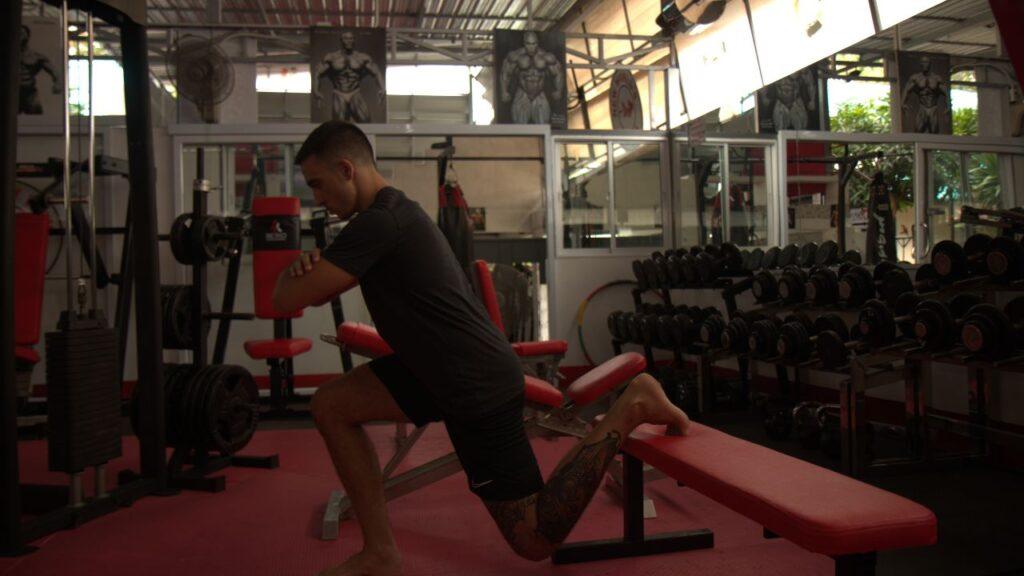
How to Perform an RFE Split Squat
- With your other foot securely in front of you, place the top of one foot on the top of the box. A decent starting point is two to three feet away from the box.
- Slowly lower yourself until your back leg almost touches the floor while maintaining core stability and an erect torso.
- Return slowly to the top
Pro Tip: Ensure your front thigh is parallel to the ground at the lowest point, and drive through your front heel to return to the starting position.
10. Push-up
One of the best exercises for the horizontal push movement pattern is the push-up. Push-ups strengthen the triceps, pectorals, and anterior deltoids. This exercise is only meant to build upper-body strength.

How to Perform a Push-up
- Arms should be slightly wider and lower than the shoulders. The angle between your elbow and body should be about 45 degrees when starting.
- Slowly descend (eccentric phase) and try to get your chest to the ground.
- Push with the palm of your hands and lift yourself.
Pro Tip: Maintain a straight line from your head to your heels in push-ups, and lower your body until your chest nearly touches the ground for a full range of motion.
11. I, Y, T
I, Y, T’s is an exercise that strengthens the shoulders and back, much like Superman. They also impact the infraspinatus, subscapularis, teres minor, and supraspinatus muscles, all part of the rotator cuff.
For those looking to isolate and strengthen the lower trapezius muscles further, incline Y raises are an excellent addition. This targeted movement complements the I, Y, T’s routine, offering a focused approach to enhancing shoulder stability and posture.

How to Perform an I, Y, T
- Hinge at the hips and raise straight arms overhead into an “I” while standing straight with your feet slightly wider than shoulder-width apart. When going overhead, keep your core firm and avoid arching your lower back. Go back to the starting place.
- Carry out the same motions while elevating your arms into the Y and T positions.
Pro Tip: Keep your core engaged and move your arms fluidly into each position, focusing on controlled movements to strengthen your shoulders and back.
12. Lateral Bound
The lateral bound is a bodyweight exercise that develops power and strength throughout the lower body. It works the quads, hamstrings, and glutes unilaterally or on one side simultaneously. It belongs to the pattern of lateral movement.
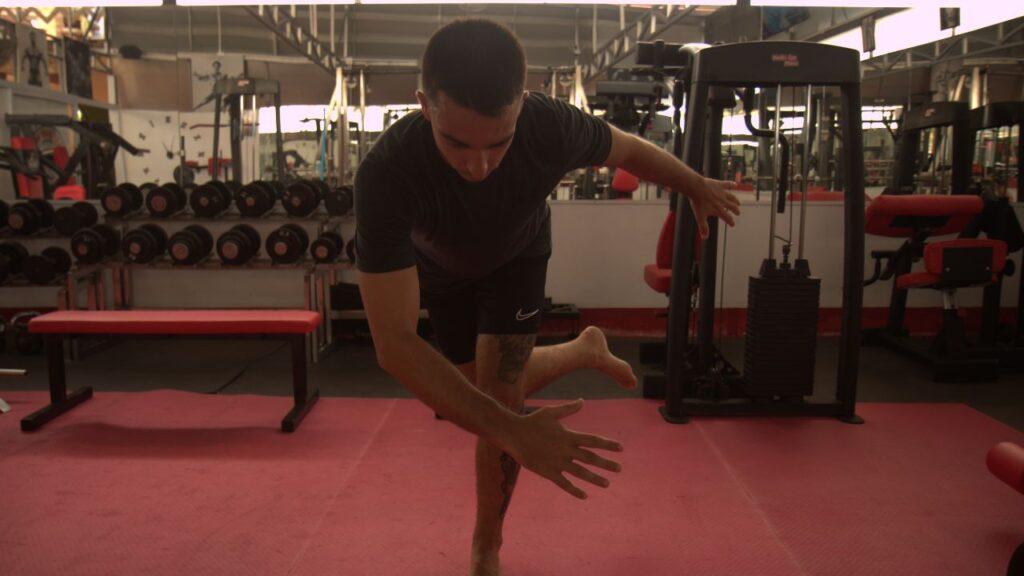
How to Perform a Lateral Bound
- Stand on one leg to start.
- Land on foot opposite from where you jumped laterally to the other side. Rebound and hop back quickly. Try to land on the balls of your feet lightly. Repeat.
Pro Tip: Push off and land on the balls of your feet, keeping your landings soft and controlled to build lower body power and stability.
13. Lunge Jump
The lunge is a basic movement pattern and a functional exercise. Performing it in a different method resembles walking movement patterns. It increases the calorie burn from this exercise by including jumps. The quads, hamstrings, and glutes are all worked during the lunge jump.
This exercise is an essential part of the best bodyweight exercise program for boosting lower body power and coordination. It protects the ankles, knees, and hips like the lateral bound.
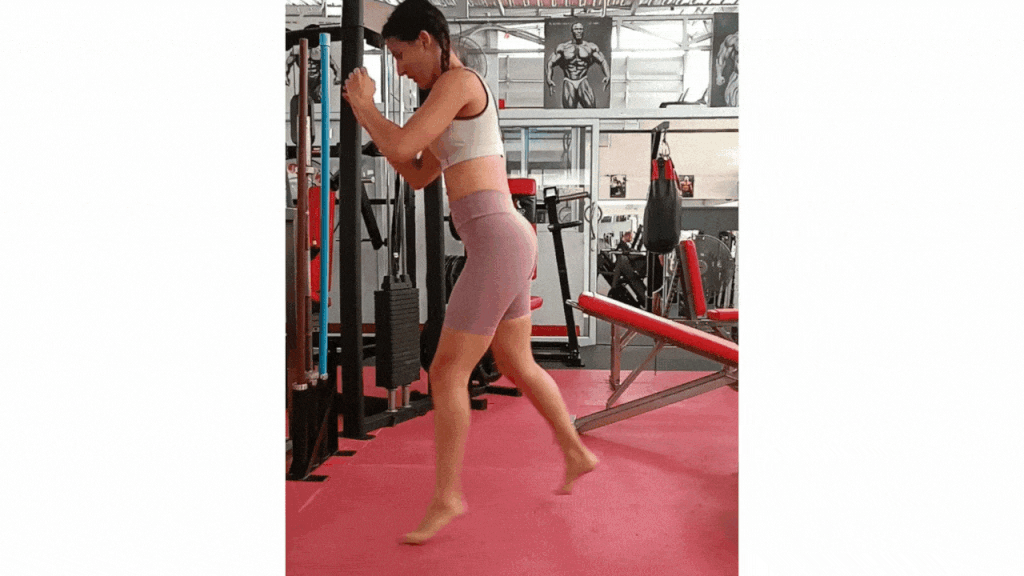
How to Perform a Lunge Jump
- Begin by standing up straight.
- Lean back and touch the leg lightly on the floor before leaping upward and switching sides. Keep your core engaged and your torso upright as you quickly repeat this.
Pro Tip: Maintain a steady rhythm and use your arms for balance, ensuring a smooth transition between each jump for an effective lower body and cardio workout.
14. Burpee
The burpee is the king of all exercises using only your body weight. Every muscle in the body, including the upper body, lower body, and core, is working. Six main actions make up the burpee: squat, thrust, plank, push-up, crunch, and stand. Integrating burpees into your functional bodyweight workout program will significantly enhance your overall strength and conditioning.
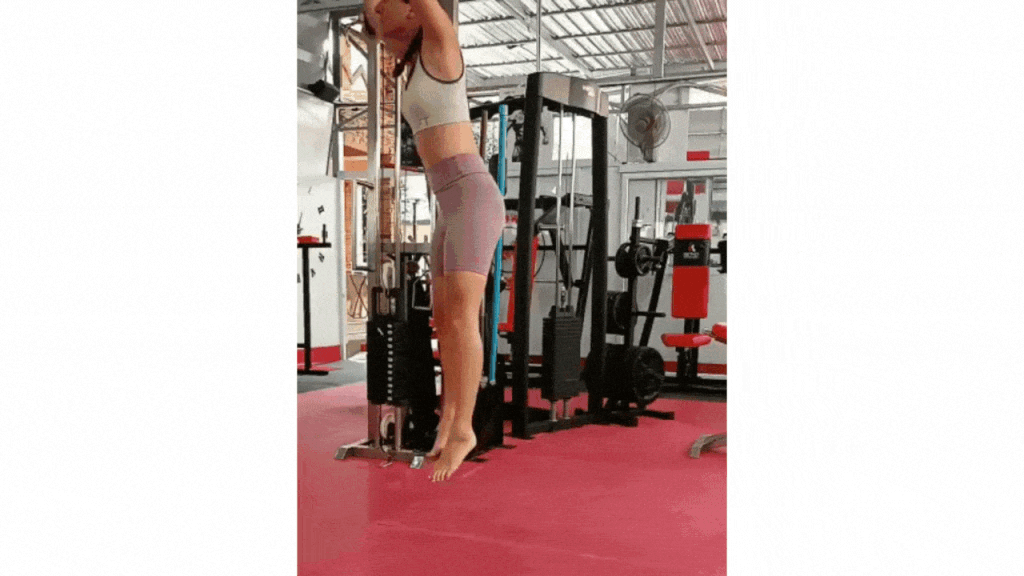
How to Perform a Burpee
- Squat and place your chest on the floor.
- Push off the ground while maintaining a tight core, squat to the ground, and then stand up straight with your hips fully extended.
- Ensure both feet are in the air as you leap off the ground.
Pro Tip: Keep your movements quick and explosive, and ensure a full squat and push-up in each repetition for a high-intensity full-body workout.
Expert Shares the Top Calisthenics Exercises for Building Muscle
In a YouTube video, Jeff Cavaliere, a Certified Strength and Conditioning Specialist by the National Strength and Conditioning Association (NSCA) and a well-known fitness coach from Athlean-X, shares his expert recommendations on the top calisthenics exercises for muscle growth:
“Calisthenics: The ultimate manifestation of the strength and control of the human body in space. As a matter of fact, they are an irreplaceable part of a complete athletic training approach because at some point, regardless of your achievements in the weight room, you’re going to have to stand on your own two feet literally and put your body to the test in competition. Today, I’m ranking the top 10 best calisthenics exercises for helping you to build muscle. Exercises like the human pullover and the handstand push-up are designed to create overload instantly because of the weight of your own body. They are effective exercises, albeit hard ones, but they will drive muscle growth guaranteed.”
Are Bodyweight Exercises Functional Strength?
Yes, bodyweight exercises are functional strength. Think of them as the unshakeable cornerstones of strength. These exercises form the basis of any effective bodyweight functional training program, ensuring you build a strong, resilient body.
Only after learning the fundamental movements that reinforce how we function can dumbbells, kettlebells, bands, and everything else play a part. In addition to being the basis of strength, bodyweight exercises have the advantage of being simple and quick to perform. Depending on your fitness level and goals, they can be adjusted to be easier or harder.
“At the same time, introducing a greater variety of movements will help to improve aspects of strength that are often overlooked. Calisthenics has many complex and challenging movements that challenge the body in three dimensions, and that work smaller supporting muscle groups that go overlooked.” – Adam Sinicki, AKA The Bioneer, author of the Functional Fitness and Beyond
Related Articles:
- 31 Functional Exercises for Superior Strength and Mobility
- Functional Training 101: Ultimate Guide to Next-Level Fitness
FAQs
Is Bodyweight Training Functional Training?
Yes, bodyweight training is functional training. A bodyweight workout requires you to utilize just your body and no other equipment.
What Are Bodyweight Only Exercises Called?
Bodyweight-only exercises are called calisthenics. The fact that calisthenics includes complex movements is one of its main advantages.
What Is the Single Best Bodyweight Exercise?
The single best bodyweight exercise is the pull-up. Pull-ups are a complex exercise that engages practically all of the muscles in the upper body.
Why Are Bodyweight Exercises So Important?
Bodyweight exercises are so important because they help improve core stability and balance. Bodyweight exercises can help you get more power, endurance, speed, flexibility, coordination, and balance.
They can also help you build strength, power, and endurance. This type of functional strength training is ideal when you can’t get to the gym but don’t want to skip a workout because it requires little equipment.
Which exercise from the list above is your favorite?
Start Building Your Dream Body Today
Ready to elevate your fitness game without falling into the trap of dull, repetitive routines that just don’t deliver? Imagine sculpting your ideal physique and boosting your health, all while still enjoying life’s pleasures, like those irresistible weekend getaways and your aunt’s legendary cheesecake. With our online fitness and nutrition coaching service, you don’t have to compromise. Dive into a personalized fitness journey that blends perfectly with your lifestyle, not against it. Book your completely free discovery consultation today, and take the first step towards a transformation that doesn’t require giving up the joys of life.

“I was skeptical about online fitness coaching, but Functional Body Savage completely changed my perspective. Vanja and Radomir’s personalized approach and attention to detail have helped me achieve goals I never thought possible. I’m stronger, more confident, and grateful for their guidance.”
Emily Thompson, San Francisco, CA
Learn More About Our Online Coaching Service





